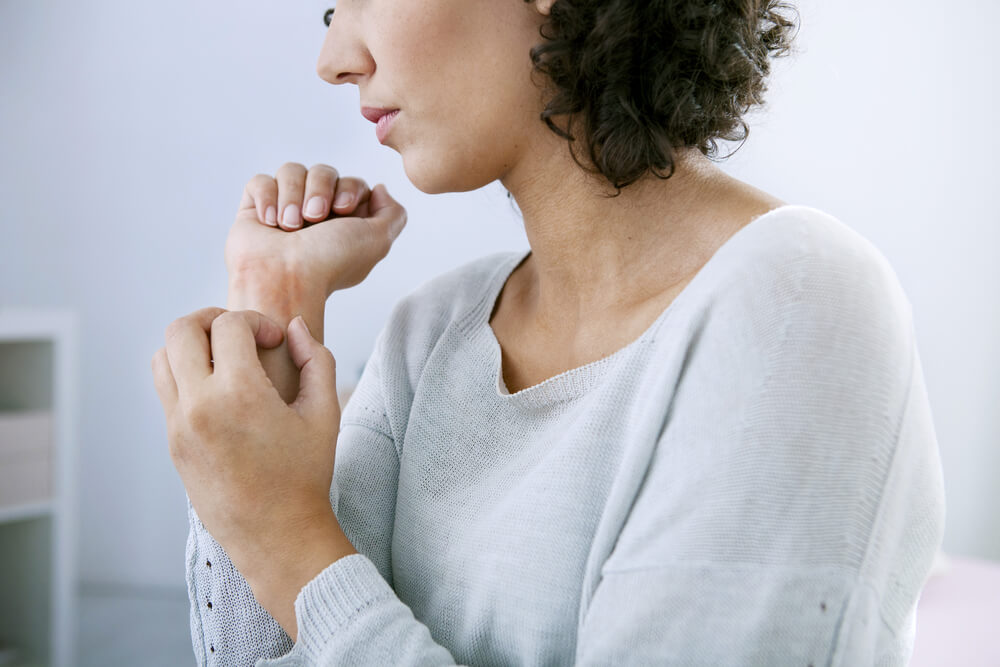If you are struggling with welts or weals, also known as hives, you are facing a condition called urticaria. This itchy, raised rash appears on the skin’s surface, and it can be located on one spot or spread across a larger area of the body.
Urticaria affects almost 20% of people at one point in their lives, and the causes can be various. Most often, the first symptom of the condition is a patch that itches, which then develops into one or more red, swollen hives. Children are often affected by urticaria, as well as women between the ages of 30 to 60 and people who have been struggling with allergies previously.
So, if you notice red bumps on the skin, make sure you ask for medical attention as soon as the bumps start developing. An experienced medical professional should take a look at the rash and perform skin tests to give a proper diagnosis. This can be done in certified centers for allergies, such as the Allergy and Immunology Center, where you can get top-notch care and guidance.
Hives can be very tiresome, uncomfortable, and painful, and the size can vary from just a few millimeters to a hand-size welt. The itch that accompanies urticaria can be mild, but in many cases, it is severe and needs to be treated with medication.
There are two main types of urticaria:
- Acute urticaria, characterized by a rash that clears within six weeks
- Chronic urticaria, which is rarer, because the rash is present for more than six weeks (in some cases, it even lasts for a few years)
A subtype of hives, which is also not that common, is urticaria vasculitis, which can be recognized by the inflammation of blood vessels in the skin lasting more than 24 hours. This usually leaves a bruise, and the hives are very painful.
Causes of Urticaria

Urticaria develops when there is a trigger that causes a rise in the levels of histamine and other chemical substances in the body that are then released into the skin. Due to this, the blood vessels in the skin open and start to leak, causing pinkness or redness of the skin. The surplus of liquid in the tissues leads to itchiness and swelling.
The causes of histamine release can be the following:
- Exposure to heat or cold
- An allergic reaction to a substance such as food, insect bite, etc.
- Different infections or a simple flu
- Medication such as antibiotics or anti-inflammatory non-steroidal drugs
Unfortunately, sometimes the cause of hives cannot be found, making the treatment path a bit more complicated than usual.
Experts say that in some instances of long-term, i.e., chronic urticaria, the person’s immune system attacks healthy tissue by mistake, but diagnosing this particular problem tends to be quite tricky.
As with many other conditions, some risk factors have a very negative influence on the condition, worsening the already existent symptoms such as:
- Alcohol consumption
- Caffeine
- Stress
- High temperatures and direct sun exposure
- Certain food groups, such as shellfish, nuts, eggs, etc.
- Medication such as ibuprofen and aspirin
- Latex
- Pollen
- Certain plants
- Blood transfusions
- Exercise
Symptoms
Symptoms of urticaria are usually very evident because the person starts experiencing, as mentioned, very visible itchy bumps on the skin, which are most often either skin-colored or red. Also, when the person presses the center of the hive, it turns white (blanching).
The symptoms of this condition can last from just a few minutes to several years. Often, people compare the welts on the skin to bug bites, but they are very different for several reasons:
- The hives can change shapes and location
- They can appear and disappear
- The bumps have very clear edges, and they can occur suddenly but also be gone rather quickly
- When the center of the hive is pressed, it becomes white
How Is the Condition Diagnosed?
In some cases, urticaria is diagnosed quickly because the patient is aware of the trigger that caused the rash (such as food, insect bite, pet dander, etc.), and the symptoms are quite obvious. When the patient is unaware of the cause, both the doctor and the patient must thoroughly investigate all possible causes.
When the patient is experiencing acute urticaria, doctors rarely perform extensive testing because the causes are usually evident, so the diagnosis and the treatment plan are more or less straightforward.
In cases when the person is suffering from chronic hives, the doctor, usually an allergist, asks about their medical history, everyday habits, consumed food, and current medicine. They then perform a series of different skin tests, a skin biopsy, as well as blood and urine tests.
Sometimes, if the suspected allergic reaction trigger is food, the medical provider performs an oral food challenge to monitor the potential food allergies causing urticaria. The same principle is applied to medicine allergies, but note that these tests are done under strict medical supervision due to the possibility of a life-threatening allergic reaction during the testing process.
Urticaria Treatment

Although experts have been working on identifying the causes of urticaria, there are still many triggers that are yet to be discovered. Nonetheless, the treatment plans created to tackle this condition are directly related to the causes of the hives.
In many cases, urticaria treatment is not needed because the rash improves over a few days and disappears on its own. When the itchiness becomes uncomfortable and stressful, doctors usually recommend using antihistamines, which are very often available over the counter; just consult your local pharmacist. This medication blocks the effects of histamine, and it is very effective and long-lasting, with just a few potential side effects.
Oral corticosteroids are a type of therapy prescribed when the patient suffers from a severe case of urticaria, where medical assistance is required. Besides standard corticosteroids, doctors can prescribe prednisone or immune modulators to reduce the symptoms and improve the patient’s condition.
If the patient is dealing with swelling in the lips or the tongue, issues with breathing, and fainting, the doctors recommend taking adrenaline auto-injectors and having them on your person at all times. Some allergic reactions can be life-threatening, so it is crucial to carry this injector always to prevent anaphylaxis and sometimes fatal consequences.
Additionally, it is recommended to avoid triggering substances or to eliminate them completely. These can include foods, scratching the hives, harsh soaps, high or very low temperatures, direct exposure to sunlight, triggering medication, putting pressure on the hives (by wearing tight clothes), etc.
Contact Our Clinic!
Experiencing urticaria can be very stressful, painful, and uncomfortable. To improve the quality of your life and treat your condition, contact our expert team right away. We are ready to guide you through the diagnosis and treatment plan; you just need to schedule an appointment and trust our experienced specialists. Don’t wait for your condition to worsen in order to get in touch!


